Showing Spotlights 1969 - 1976 of 2782 in category All (newest first):
 According to the World Health Organization, lung cancer is the leading cancer-related cause of death, accounting for 18 percent of cancer deaths and killing about 1.3 million people worldwide every year. Conventional diagnostic methods for lung cancer occasionally miss tumors and they are costly and unsuitable for widespread screening. Breath testing is a fast, non-invasive diagnostic method that links specific volatile organic compounds (VOCs) in exhaled breath to medical conditions. However, these techniques - gas chromatography/mass spectrometry, ion flow tube mass spectrometry, laser absorption spectrometry, infrared spectroscopy, polymer-coated surface acoustic wave sensors and coated quartz crystal microbalance sensors - are expensive, slow, and require complex instruments. A multidisciplinary research team at Technion - Israel Institute of Technology have now demonstrated a highly sensitive, stable, relatively inexpensive, and fast-response nine-sensor array that consists of gold nanoparticles functionalized with different organic groups that respond to various VOCs that are relevant to lung cancer.
According to the World Health Organization, lung cancer is the leading cancer-related cause of death, accounting for 18 percent of cancer deaths and killing about 1.3 million people worldwide every year. Conventional diagnostic methods for lung cancer occasionally miss tumors and they are costly and unsuitable for widespread screening. Breath testing is a fast, non-invasive diagnostic method that links specific volatile organic compounds (VOCs) in exhaled breath to medical conditions. However, these techniques - gas chromatography/mass spectrometry, ion flow tube mass spectrometry, laser absorption spectrometry, infrared spectroscopy, polymer-coated surface acoustic wave sensors and coated quartz crystal microbalance sensors - are expensive, slow, and require complex instruments. A multidisciplinary research team at Technion - Israel Institute of Technology have now demonstrated a highly sensitive, stable, relatively inexpensive, and fast-response nine-sensor array that consists of gold nanoparticles functionalized with different organic groups that respond to various VOCs that are relevant to lung cancer.
Aug 31st, 2009
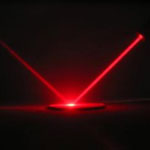 Previously we reported on self-healing nanotechnology anticorrosion coatings, a novel method of multilayer anticorrosion protection including the surface pre-treatment by sonication and deposition of polyelectrolytes and inhibitors. The main novelty of the proposed system was the multi-level protection approach, where the protective systems - the 'smart' multilayers - will not only be a barrier to external impacts, but also respond to changes in their internal structure, and combine in the same system different damage prevention and reparation mechanisms. The team now reports the development of laser-activated nanocontainers filled with corrosion inhibitors. With this new nanomaterial, the healing ability of anticorrosion agents is remotely activated by light.
Previously we reported on self-healing nanotechnology anticorrosion coatings, a novel method of multilayer anticorrosion protection including the surface pre-treatment by sonication and deposition of polyelectrolytes and inhibitors. The main novelty of the proposed system was the multi-level protection approach, where the protective systems - the 'smart' multilayers - will not only be a barrier to external impacts, but also respond to changes in their internal structure, and combine in the same system different damage prevention and reparation mechanisms. The team now reports the development of laser-activated nanocontainers filled with corrosion inhibitors. With this new nanomaterial, the healing ability of anticorrosion agents is remotely activated by light.
Aug 27th, 2009
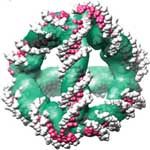 A Japanese-UK research team has now demonstrated that cryoEM image analysis may be exploited to obtain structural information of sufficient resolution to reveal the absolute three-dimensional (3D) configuration of a designed DNA nanostructure. With their technique they have obtained structural information at sufficient resolution to visualize the DNA helix and reveal the absolute stereochemistry of a self-assembled DNA tetrahedron. Each edge is a 7 nm, 20 base pair duplex, and the edges are connected covalently through single unpaired adenosine nucleotides, making it a rigid, triangulated structure that could serve as a building block for larger 3D structures or as a molecular cage. This DNA tetrahedron is the smallest 3D nanostructure made by DNA self-assembly.
A Japanese-UK research team has now demonstrated that cryoEM image analysis may be exploited to obtain structural information of sufficient resolution to reveal the absolute three-dimensional (3D) configuration of a designed DNA nanostructure. With their technique they have obtained structural information at sufficient resolution to visualize the DNA helix and reveal the absolute stereochemistry of a self-assembled DNA tetrahedron. Each edge is a 7 nm, 20 base pair duplex, and the edges are connected covalently through single unpaired adenosine nucleotides, making it a rigid, triangulated structure that could serve as a building block for larger 3D structures or as a molecular cage. This DNA tetrahedron is the smallest 3D nanostructure made by DNA self-assembly.
Aug 25th, 2009
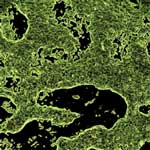 While biofilms are mostly seen from a point of view of pathogenic threats, their complex frameworks with biological behavior, chemical heterogeneity, and physical structure at micro- or even nanoscopic level, biofilms could also be useful in nanofabrication - each of these properties can be an attractive avenue for the development of nanotechnology and material science. Researchers at the Chinese Academy of Sciences have now systematically demonstrated the potential of biofilms for nanostructure engineering. Their research shows that, in principle, biofilms can be an efficient and low-cost approach for large-scale nanotechnology fabrication of various nanostructures.
While biofilms are mostly seen from a point of view of pathogenic threats, their complex frameworks with biological behavior, chemical heterogeneity, and physical structure at micro- or even nanoscopic level, biofilms could also be useful in nanofabrication - each of these properties can be an attractive avenue for the development of nanotechnology and material science. Researchers at the Chinese Academy of Sciences have now systematically demonstrated the potential of biofilms for nanostructure engineering. Their research shows that, in principle, biofilms can be an efficient and low-cost approach for large-scale nanotechnology fabrication of various nanostructures.
Aug 24th, 2009
 Sometimes we get bombarded with emails from people who are new to the field about certain aspects of nanotechnology - can it cure cancer? Where can I buy nanobots? What is a nanomaterial? Is nanotechnology dangerous? And so forth. You get the idea. The question asked most often is simply this: 'What is nanotechnology?' That's why we have decided to add a new segment to our Nanowerk website that we call 'Ten things you should know about nanotechnology'. What we have been trying to do here is to provide a brief overview of some important aspects and issues and answer some of the basic questions on nanotechnologies. Of course, there is lots of important information that we omitted. But we feel that, if you are new to nanotechnology, this is a good point to start.
Sometimes we get bombarded with emails from people who are new to the field about certain aspects of nanotechnology - can it cure cancer? Where can I buy nanobots? What is a nanomaterial? Is nanotechnology dangerous? And so forth. You get the idea. The question asked most often is simply this: 'What is nanotechnology?' That's why we have decided to add a new segment to our Nanowerk website that we call 'Ten things you should know about nanotechnology'. What we have been trying to do here is to provide a brief overview of some important aspects and issues and answer some of the basic questions on nanotechnologies. Of course, there is lots of important information that we omitted. But we feel that, if you are new to nanotechnology, this is a good point to start.
Aug 20th, 2009
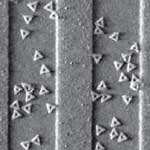 DNA origami, tiny shapes and patterns self-assembled from DNA, have been heralded as a potential breakthrough for the creation of nanoscale circuits and devices. One roadblock to their use has been that they are made in solution, and they stick randomly to surfaces - like a deck of playing cards thrown onto a floor. Random arrangements of DNA origami are not very useful; if they carry electronic circuits for example, they are difficult to find and 'wire-up' into larger circuits. A collaboration between Caltech and IBM research Almaden has found a way to position and orient DNA origami on surfaces by creating sticky patches in the shape of origami - as a demonstration they positioned and aligned triangular DNA origami on triangular sticky patches. This success knocks down one of the major roadblocks for the use of DNA origami in computer nanotechnology.
DNA origami, tiny shapes and patterns self-assembled from DNA, have been heralded as a potential breakthrough for the creation of nanoscale circuits and devices. One roadblock to their use has been that they are made in solution, and they stick randomly to surfaces - like a deck of playing cards thrown onto a floor. Random arrangements of DNA origami are not very useful; if they carry electronic circuits for example, they are difficult to find and 'wire-up' into larger circuits. A collaboration between Caltech and IBM research Almaden has found a way to position and orient DNA origami on surfaces by creating sticky patches in the shape of origami - as a demonstration they positioned and aligned triangular DNA origami on triangular sticky patches. This success knocks down one of the major roadblocks for the use of DNA origami in computer nanotechnology.
Aug 18th, 2009
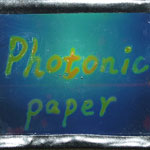 Photonic crystals are very suitable for fabricating sensor devices because the optical signals of these responsive materials are tightly coupled with various external stimuli and modulations. They could also play a significant role on the way to all-optical devices in communication and information technology - they form a basis material for the future realization of optical components and circuits, and maybe even complex optical circuits or optical computers. One application area that has seen a lot of activity recently is photonic paper and ink. One advantage of photonic papers and displays is that they are brilliant and free of glare in sunlight, which are superior to the characteristics of other emissive display technologies for outdoor usage such as advertising billboards. Another advantage is that, for recording purposes, the structural colors of photonic paper are usually more durable than traditional pigments and dyes. However, there are still a number of issues and problems that prevent the practical applications of the photonic crystal based materials. Researchers in California have now addressed some of them by reporting a new type of rewritable photonic paper on which a durable ink mark can be written or erased by introducing or removing a hygroscopic salt in the surface layer of the paper.
Photonic crystals are very suitable for fabricating sensor devices because the optical signals of these responsive materials are tightly coupled with various external stimuli and modulations. They could also play a significant role on the way to all-optical devices in communication and information technology - they form a basis material for the future realization of optical components and circuits, and maybe even complex optical circuits or optical computers. One application area that has seen a lot of activity recently is photonic paper and ink. One advantage of photonic papers and displays is that they are brilliant and free of glare in sunlight, which are superior to the characteristics of other emissive display technologies for outdoor usage such as advertising billboards. Another advantage is that, for recording purposes, the structural colors of photonic paper are usually more durable than traditional pigments and dyes. However, there are still a number of issues and problems that prevent the practical applications of the photonic crystal based materials. Researchers in California have now addressed some of them by reporting a new type of rewritable photonic paper on which a durable ink mark can be written or erased by introducing or removing a hygroscopic salt in the surface layer of the paper.
Aug 17th, 2009
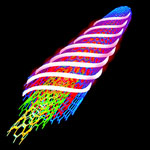 Various forms of hyperthermia - a form of cancer treatment with elevated temperature in the range of 41-45C - have been intensively developed for the past few decades to provide cancer clinics with more effective and advanced cancer therapy techniques. The recent use of nanomaterials has shown promising for developing more effective hyperthermia agents. While most nanomedical hyperthermia research is conducted with various nanoparticles, carbon nanotubes are also of interest in these thermal ablation applications. So far, however, the utility of carbon nanotubes for in vivo use has been limited by self-association - i.e. they stick to each other. A new study has now demonstrated that DNA-encasement of multi-walled carbon nanotubes (MWCNTs) results in well-dispersed, single MWCNTs that are soluble in water and that display enhanced heat production efficiency relative to non-DNA-encased MWCNTs.
Various forms of hyperthermia - a form of cancer treatment with elevated temperature in the range of 41-45C - have been intensively developed for the past few decades to provide cancer clinics with more effective and advanced cancer therapy techniques. The recent use of nanomaterials has shown promising for developing more effective hyperthermia agents. While most nanomedical hyperthermia research is conducted with various nanoparticles, carbon nanotubes are also of interest in these thermal ablation applications. So far, however, the utility of carbon nanotubes for in vivo use has been limited by self-association - i.e. they stick to each other. A new study has now demonstrated that DNA-encasement of multi-walled carbon nanotubes (MWCNTs) results in well-dispersed, single MWCNTs that are soluble in water and that display enhanced heat production efficiency relative to non-DNA-encased MWCNTs.
Aug 13th, 2009
 According to the World Health Organization, lung cancer is the leading cancer-related cause of death, accounting for 18 percent of cancer deaths and killing about 1.3 million people worldwide every year. Conventional diagnostic methods for lung cancer occasionally miss tumors and they are costly and unsuitable for widespread screening. Breath testing is a fast, non-invasive diagnostic method that links specific volatile organic compounds (VOCs) in exhaled breath to medical conditions. However, these techniques - gas chromatography/mass spectrometry, ion flow tube mass spectrometry, laser absorption spectrometry, infrared spectroscopy, polymer-coated surface acoustic wave sensors and coated quartz crystal microbalance sensors - are expensive, slow, and require complex instruments. A multidisciplinary research team at Technion - Israel Institute of Technology have now demonstrated a highly sensitive, stable, relatively inexpensive, and fast-response nine-sensor array that consists of gold nanoparticles functionalized with different organic groups that respond to various VOCs that are relevant to lung cancer.
According to the World Health Organization, lung cancer is the leading cancer-related cause of death, accounting for 18 percent of cancer deaths and killing about 1.3 million people worldwide every year. Conventional diagnostic methods for lung cancer occasionally miss tumors and they are costly and unsuitable for widespread screening. Breath testing is a fast, non-invasive diagnostic method that links specific volatile organic compounds (VOCs) in exhaled breath to medical conditions. However, these techniques - gas chromatography/mass spectrometry, ion flow tube mass spectrometry, laser absorption spectrometry, infrared spectroscopy, polymer-coated surface acoustic wave sensors and coated quartz crystal microbalance sensors - are expensive, slow, and require complex instruments. A multidisciplinary research team at Technion - Israel Institute of Technology have now demonstrated a highly sensitive, stable, relatively inexpensive, and fast-response nine-sensor array that consists of gold nanoparticles functionalized with different organic groups that respond to various VOCs that are relevant to lung cancer.
 Subscribe to our Nanotechnology Spotlight feed
Subscribe to our Nanotechnology Spotlight feed





